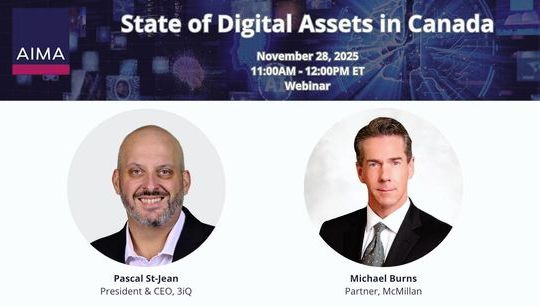What's in store for the alternative asset management industry in 2024?
By Tom Kehoe, Global Head of Research and Communications, AIMA
Published: 19 January 2024
What’s in store for the alternative asset management industry in 2024?
1. Continued dominance of multi-manager platforms.
The multi-manager hedge fund platform's ascent marks a significant shift in the industry. Despite recent mixed performance, it continues to attract the lion’s share of new capital investment. With investors seeking more sophisticated strategies and the financial landscape growing more complex, the multi-manager model's appeal for its varied investment approaches and risk management remains strong. However, escalating competition for top talent is increasing costs and barriers to entry for multi-manager funds. This dynamic is likely to lead to industry consolidation, resulting in a more pronounced bifurcation, with a smaller group of key players controlling a larger share of assets under management in the coming years.
2. Greater certainty regarding the global regulatory environment.
The past year marked AIMA's most active period in global industry advocacy, driven by the SEC's extensive rule-making agenda. AIMA responded to more regulatory proposals in North America than ever before. Although the US regulatory landscape will continue to evolve in several key areas this year, the emphasis is shifting to implementation, which will inevitably bring a degree of certainty for the industry. Additionally, the US, UK, and EU are anticipated to reduce new policy initiatives as they approach the later phases of their political cycles ahead of upcoming elections. One way or another the global regulatory picture for the alternative asset management industry will be clearer by the end of 2024.
3. The end of the crypto winter brings a new dawn of opportunities for digital assets.
In 2023, the digital asset sector rebounded strongly, especially after the 2022 FTX collapse. Bitcoin saw over a 150% increase, driven by excitement over the anticipated approval of Bitcoin ETFs, a major milestone for the cryptocurrency industry.
The trend towards fund and asset tokenisation is expected to accelerate this year, attracting attention from both crypto industry veterans and new market players like institutional investors and regulators. As firms look to benefit from the operational efficiencies derived from the integration of Distributed Ledger Technology into their back-office processes, the ongoing expansion of these capabilities will create additional avenues to seamlessly integrate and distribute products. There is an expectation that an increasing number of issuers will introduce tokenised alternative assets to the market, appealing to investors seeking diversified deal flow opportunities.
4. Private credit will continue to thrive.
Private credit looks set to retain its popularity among investors over the coming year driven by ongoing bank retrenchment. This retreat is set to boost asset backed finance and real estate debt, continuing a decade-long trend in corporate lending. Higher for longer interest rates will continue to be a double-edged sword for the sector, boosting returns on floating rate loans while at the same time increasing borrower repayment pressures.
Over this year, private credit fund managers will continue their strategic focus on developing products for private wealth and retail clients, with these pools of capital steadily growing as a proportion of the sectors overall AUM.
5. Greater adoption of generative AI by asset managers.
Last year saw the world at large sit up and take notice of the enormous impact that the different forms of AI will bring to our civilisation. AI will no longer be confined to asset managers pursuing quantitative strategies, rather it will be adopted to varying degrees by a broader range of hedge funds as they strive to be more operationally efficient and find new ways to deliver alpha. The coming year will see greater adoption of Generative AI by the alternative asset management industry, many of whom are committing significant resources to unlock its potential to optimise operational tasks and ultimately allow asset managers to focus on portfolio decision-making.








